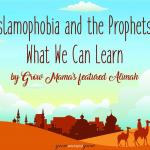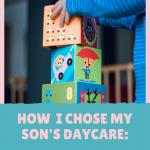My kids have always been in Islamic School so I have never had to worry about Islamophobia as it related to my own children day to day. Recently, however, my husband and I made the decision to enroll our kids in the local public school and in making that decision I began to reflect on the very real possibility that they would experience Islamophobia at school.
I know what you’re thinking because its exactly what my husband was thinking. Come on Farrah, Islamophobia doesn’t really exist, I mean we live in Canada, it’s more of a US problem. So, I did some research.
It’s clear to me that an Islamophobic sentiment is firmly entrenched in Canada. In the most recent Angus-Reed pole (2013), Canadians held a 54 percent negative view of Islam and according to a 2016 Environics poll, ‘One-third of Muslims in Canada have experienced discrimination or unfair treatment in the past five years due to their religion, ethnicity/culture, language or sex. Such treatment is most commonly experienced in the workplace, public spaces, retail establishments AND SCHOOLS or universities.’
Frighteningly, these sentiments have translated into hate crimes against the Muslim community. According to Statistics Canada, the number of police-reported hate crimes targeting Muslims has doubled over a three-year period, despite the total number of hate crimes dropping. Compared to other religions, hate crimes against Muslims are more likely to be violent. In 2015, the Toronto Police reported that Muslims were one of the top three most targeted victim groups and the second most likely religious group to be targeted for a hate motivated crime
As a former Islamic School administrator, I saw the brunt of these sentiments regularly throughout the years on the school’s social media pages. I saw unsolicited angry faces and comments such as ‘f*** off and take your religion with you’, ‘stay out of America’, ‘Americans don’t want you here’, ‘Islam is un-American’, ‘go home’, among many others.
But is Islamophobia really something that our kids are experiencing in our local public schools?
In March 2016, my former school team and I recruited five different community organizations with expertise in youth mental health, education, and the arts, as well as five young artists to help discuss and address Islamophobia with middle and high school Muslim youth. It was attended by over 50 young Muslims from both public and Islamic schools. In an informal pole, all the student groups reported that they felt that the media made them feel like Islam was synonymous with terrorism and that Muslims were considered terrorists. Eighty-eight percent of the student groups reported that they felt their friends had some negative feelings towards Islam and Muslims. When students were asked “How is Islam perceived by people around you?” students responded with: “oppressing,” “dangerous,” and “my friends think ISIS represents Islam,”.
This past summer, A Quran was ripped up at a Peel Public School board meeting in response to students being accommodated for Juma’a prayers. In addition, high school students were harassed outside of John Fraser Secondary School in Mississauga, by islamophobes who wore t-shirts with slogans such as ‘Stop Islam Save Humanity’ and, using a bullhorn, chanted that “Islam is a rape cult, promotes terror, violence, hate and child sexual assault”, among other things.
Seeing this data made it clear to me that what happens in Canadian society has an impact on students in public schools, after all schools are microcosms of society. So, what are we as parents to do?
- Remember that our children are intuitive. Our first instinct is to try and shield them from what’s happening by not talking about it because we feel like we are going to rob them of their carefree childhood. But we forget that kids are very intuitive and they pick up on what’s going on around them. Case in point, when Trump won the election I was devastated and I said that to my husband in front of my 7-year-old son. My son turned to me and patted me on the back and said matter-of-factly ‘don’t worry mama, we can still go to Buffalo, we’ll just paint ourselves white”. Needless to say, I was flabbergasted.
- Talk to them openly, honestly, and age-appropriately. Ultimately, since my kids have been in public school I have consistency been talking to them openly, honestly and age-appropriately about Islamophobia. I like using Wahida Saif’s advice in the Huffington Post to frame our conversations and would encourage others to do the same. Her tips are practical and organized by age as follows:
Preschoolers:
- Generally, preschoolers do not need to know about current world events, unless it directly affects them (their school/community)
- Monitor media exposure – they see, hear, and understand more than we think
- If you think your child knows or if they ask you questions, answer their questions, emphasizing what adults are doing to ensure their safety
Ages 7 – 12:
- Ask them what they already know and what their understanding is of the situation ― “Have you heard about what happened in Orlando?”
- Ask them about their main concerns
- Correct any misinformation
- Reassure them of their safety without promising things you can’t guarantee
- Make clear that only those people who “do bad things” are to blame, and not everyone from that same group – just like they wouldn’t want to be blamed for something their sibling did
- Discuss the concept of Islamophobia in a larger context: it is a form of discrimination; people often fear things they don’t understand; sometimes an entire group gets blamed for the actions of a few
Ages 12+
- Assume they know about world events, local politics, and current backlash against minority groups
- Ask about what they’re seeing on social media
- Ask how they understand the current political climate, including Islamophobia
- Ask if they’ve had negative or positive experiences specific to being Muslim; share your own positive experiences
- Put the current geopolitical climate within a historical context – explain how various groups of people, throughout history, have used various political, racial and religious ideologies to advance their personal agenda
- Discuss Islamophobia in a broader context – discrimination against certain groups of people is commonplace throughout American history (Native Americans, Jews, Italians, Catholics, slaves, etc.)
- Encourage them to explore how they might answer difficult questions about their faith through role-playing scenarios
- Talk to them about bullying and teach them how to be an ally – role play how they might handle a situation where they themselves, a classmate or friend is being bullied
- Invite them to think of concrete ways in which they can make a positive impact
You can find her article here: https://www.huffingtonpost.com/entry/the-impossible-conversation-talking-to-children-about_us_57ee58b3e4b0972364deb0eb
- Remind them of Allah. I add to Wahida Saif’s framing by always reminding my kids that Allah gave them a tongue to speak up if someone is verbally or physically hurting them or others and they should never be afraid to use it. I also remind them that Islam teaches us to help those in need, so if they see someone being targeted for being different, they should help stop it. Finally, I remind them that Allah is with them at all times and He is a source of strength and protection when they need it.
Islamophobia is a scary thought for Muslim parents, not to mention Muslim children. But our kids sense our attitudes and if we take a pro-active approach, inshaAllah they will learn to navigate the potential hate as well.
Read more at http://www.patheos.com/blogs/growmama/growmama-roundup/toys-boys-toys-girls-grow-mama-debate-part-ii/#SSjWrMMF958l0yAR.99











